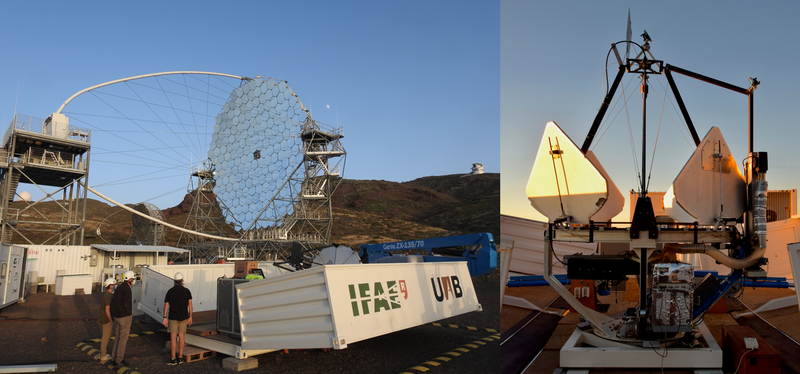J1-60014 Atmospheric Raman lidar for the northern Cherenkov Telescope Array Observatory and its use in high precision measurements of very high energy cosmic rays
Very high-energy (VHE) gamma rays from space carry unique information about the most energetic phenomena in the Universe. The most sensitive experimental approach in VHE gamma-ray astronomy is based on simultaneous imaging of Cherenkov flashes from VHE gamma ray induced air showers using multiple telescopes (imaging air Cherenkov telescopes or IACTs), and reconstruction of the primary gamma-ray properties from those images. The construction of a new generation IACT facility, the Cherenkov Telescope Array Observatory (CTAO) with design sensitivity improved by at least an order of magnitude compared to existing VHE instruments and extended energy coverage, started in 2023 and the construction endeavor is taking steps to ultimately take a legal form of a European Research Infrastructure Consortium (CTAO ERIC), where Slovenia will be one of the founding members. CTA is expected to enable the detection of more than 1000 new VHE gamma-ray sources over the whole sky.
The active part of the CTAO observatory is the Earth's atmosphere. Therefore, for the required precision in measuring the properties of VHE photons, a detailed and continuous understanding of atmospheric characteristics is paramount, particularly its optical depth in specific directions from which Cherenkov light originates. In previous research, we have demonstrated that a scanning Raman lidar has the capabilities needed for this challenging task, as laser pulses, backscattered on atmospheric gas molecules and aerosols, allow for the reconstruction of atmospheric property profiles along the emitted direction. For the successful operation of the CTAO, the detectable range of its lidar must reach up to 30 km, and measurements need to be made in the shortest time possible to avoid interfering with the operation of Cherenkov telescopes and other observatories close to CTAO. Rapid and accurate lidar measurements of atmospheric properties are the only way to reduce systematic errors in reconstructing the properties of VHE photons and increase the observatory's operational time compared to currently existing IACTs. An advanced and dedicated Raman lidar system is a crucial component for the CTAO.

The primary goal of the proposed project is the implementation of the Raman lidar within the framework of the northern observatory of CTAO, which directly contribute to the construction of the observatory. The lidar will be developed based on our working prototype, the "CTAO-N Raman Lidar Pathfinder," within an international collaboration with researchers from the Institut de Física d’Altes Energies and Universitat Autònoma de Barcelona in Spain, the University of Nova Gorica, INFN - Padova, and the University of Padova in Italy, as well as the University of Rijeka in Croatia. Our device represents a contribution from Spain (80%) and Slovenia (20%) in kind to the construction of the observatory.

Main project objective is aligned with key activities for the construction and early operation of CTAO, representing a substantial contribution from Slovenia to the observatory's construction.
